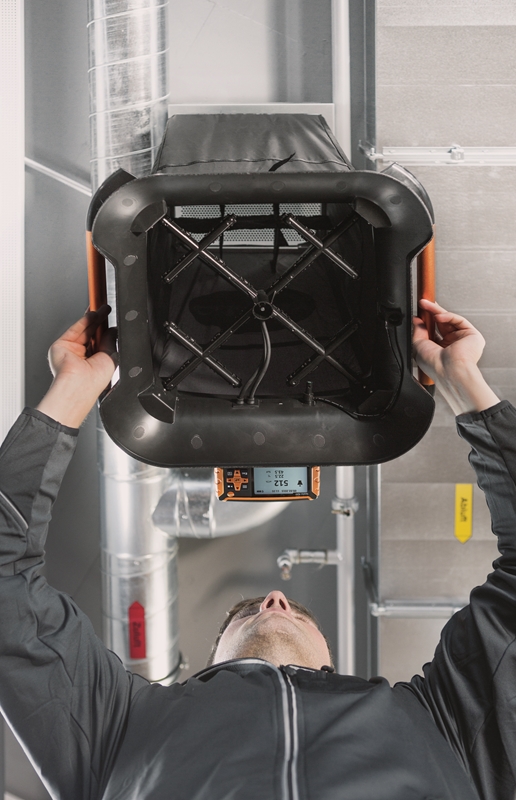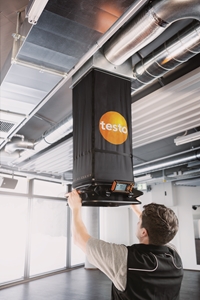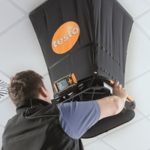Heating, ventilation and air conditioning (HVAC) isn't the same occupation it used to be.
With many organisations placing a greater focus on energy efficiency, preventative maintenance strategies and smart building technologies, technicians can begin to feel outmatched by the traditional tools they use. Facility managers are regaining the advantage by integrating certain devices into their daily routines, like the testo 420 air flow hood.
Here are three features that your next volume flow hood should have in order to keep pace with HVAC innovation:
1. Internet of Things (IoT) connectivity
Data is quickly becoming the world's most valuable resource. In 2015, 7.8 zetabytes of data was captured from smart buildings, and that's supposed to nearly double to 14.6 zetabytes in 2017, Statista reported. This is largely due to the fact there will be a 31 per cent increase in the amount of devices that are connected due to the popularity of IoT, reaching 8.4 billion in 2017, according to Gartner.

The switch to smarter building maintenance technology is all but required for technicians moving forward. Facility managers will want to quickly be able to generate analysis and insights from maintenance, meaning the abrupt end for analogue metres. Air flow hoods with digital displays that can transmit data to smartphones or tablets through Bluetooth are the industry standard moving forward.
2. Volume flow straightener
Facility managers are implementing new strategies and protocols to gain a competitive advantage and generate savings, but the differences are negligible if the tools remain standard across the board. Those who integrate innovative and proprietary technology will ultimately see the most long-term success.
One key area technicians should look to enhance is air flow measurement. Given that most testing occurs at swirl outlets, turbulence can skew results and provide incorrect readings. The testo 420 mitigates this risk with its volume flow straightener, which allows for accurate calculations of up to 3,500 cubic metres per hour.

3. Seamless interchangeability
While transitioning to a preventative maintenance strategy may initially require extra legwork, it shouldn't extend the average equipment upkeep time. Air flow hoods should offer the ability to collect data on various measurement points, without the labour that's normally associated with it.
The testo 420 can measure 16 components of HVAC functionality, like relative humidity, temperature and differential pressure. It cuts down on the time technicians are spending recording information, so they have more opportunity to analyse it. Contact a Testo representative today to learn more.









 Reduce cooking oil costs while ensuring quality
Reduce cooking oil costs while ensuring quality Expert knowledge on CO2 monitoring
Expert knowledge on CO2 monitoring Refrigeration knowledge - in 3 modules
Refrigeration knowledge - in 3 modules



